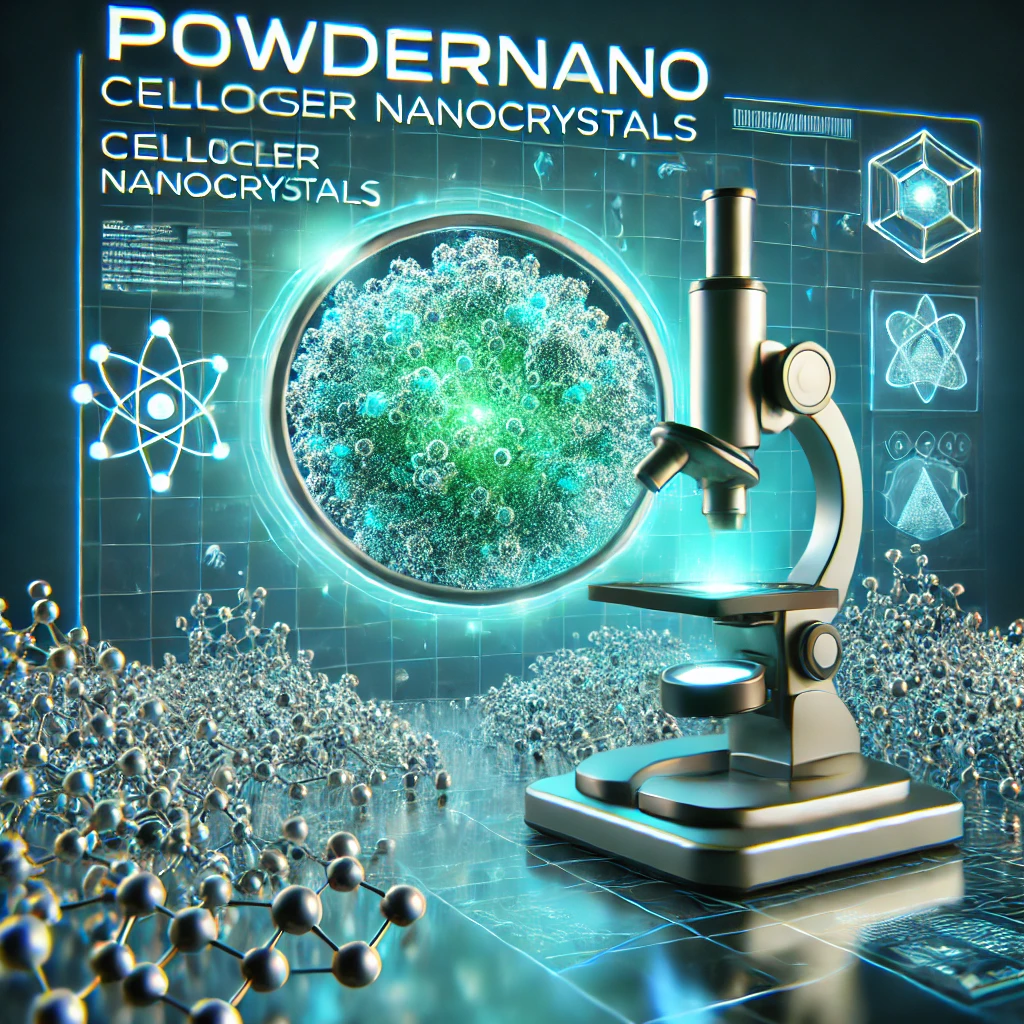Introduction
In the realm of nanotechnology, cellulose-based nanostructures have emerged as revolutionary materials offering remarkable properties such as renewability, biodegradability, high surface-to-volume ratio, and excellent mechanical strength. PowderNano, a leader in nanomaterial production, delves into the fascinating world of cellulose nanostructures (CNSs), including cellulose nanofibers (CNFs), cellulose nanocrystals (CNCs), and bacterial nanocellulose (BNCs). These advanced materials have opened doors to innovative applications in biomedical, packaging, water purification, emulsification, and the textile industry.
Understanding Cellulose Nanostructures (CNSs)
Cellulose is the most abundant biopolymer on Earth, derived primarily from plant sources. It consists of glucose units linked by β-1,4-glycosidic bonds, forming a highly ordered crystalline structure interspersed with amorphous regions. By employing various mechanical, chemical, and enzymatic treatments, different types of CNSs can be extracted and utilized for a wide range of applications.
- Cellulose Nanocrystals (CNCs)
CNCs are highly crystalline needle-like structures obtained through chemical hydrolysis methods such as sulfuric acid hydrolysis. They exhibit impressive mechanical strength, high aspect ratios, and unique optical properties, making them ideal for nanocomposites, biomedical applications, and stabilizers in emulsions.
- Cellulose Nanofibers (CNFs)
Unlike CNCs, CNFs are obtained via mechanical treatments like grinding, ultrasonication, and high-pressure homogenization. They retain both crystalline and amorphous regions, offering exceptional flexibility and mechanical reinforcement properties, widely used in food packaging, coatings, and biomedical applications.
- Bacterial Nanocellulose (BNCs)
BNCs are synthesized through microbial fermentation, providing pure cellulose without non-cellulosic impurities. Their unique properties, such as high water retention, flexibility, and superior mechanical strength, make them valuable in wound healing, tissue engineering, and high-performance packaging.
Fabrication of CNSs
The production methods for CNCs, CNFs, and BNCs vary based on the desired end application. PowderNano employs cutting-edge techniques to optimize the extraction and processing of these materials.
- CNCs Production: Acid hydrolysis (sulfuric, phosphoric, hydrochloric acids) removes amorphous regions, leaving behind highly crystalline nanocrystals.
- CNFs Production: High-intensity mechanical processes such as microfluidization, cryo-grinding, and high-pressure homogenization produce nanofibers with remarkable flexibility and tensile strength.
- BNCs Production: Bacterial strains like Gluconacetobacter are used to ferment organic substrates, yielding pure nanocellulose membranes or dispersed nanofibers.
Characterization of CNSs
Accurate characterization of CNSs is crucial for optimizing their performance in real-world applications. Techniques employed include:
- Scanning Electron Microscopy (SEM): Determines surface morphology and fiber dimensions.
- X-ray Diffraction (XRD): Assesses crystallinity and structural integrity.
- Fourier Transform Infrared Spectroscopy (FTIR): Identifies functional groups and chemical modifications.
- Thermogravimetric Analysis (TGA): Evaluates thermal stability and decomposition behavior.
- Dynamic Mechanical Analysis (DMA): Measures mechanical properties like tensile strength and elasticity.
- Nuclear Magnetic Resonance (NMR): Provides insight into molecular structure and surface chemistry.
Applications of CNSs
The versatility of CNSs has led to their widespread adoption across multiple industries.
- Biomedical Applications
CNCs, CNFs, and BNCs have revolutionized the biomedical sector due to their biocompatibility and mechanical properties. PowderNano is pioneering research in:
- Wound Dressings: BNC-based dressings provide a moist environment, promoting faster healing.
- Tissue Engineering: CNFs and CNCs are used in scaffolds for bone, skin, and cartilage regeneration.
- Drug Delivery Systems: Nanocellulose structures act as carriers for controlled drug release.
- Packaging Industry
The need for sustainable packaging materials has led to the integration of CNSs into biodegradable films. PowderNano develops nanocellulose-based packaging solutions that enhance:
- Barrier Properties: CNCs improve resistance to oxygen and moisture.
- Mechanical Strength: CNFs reinforce biopolymer-based films.
- Smart Packaging: BNC-infused films respond to environmental changes.
- Water Purification
Water contamination is a global concern, and nanocellulose-based filtration membranes offer efficient solutions:
- Heavy Metal Removal: CNFs functionalized with carboxyl groups adsorb toxic metals.
- Oil-Water Separation: Hydrophobic CNCs create ultrafiltration membranes.
- Desalination: BNC composites enable selective ion separation.
- Emulsification & Food Industry
Pickering emulsions stabilized by nanocellulose enhance the texture and stability of food products. PowderNano explores the use of CNCs and CNFs in:
- Stabilizing Emulsions: CNCs provide steric hindrance, preventing droplet coalescence.
- Fat Replacement: CNFs create creamy textures in low-fat formulations.
- Encapsulation: BNC-based microcapsules protect sensitive bioactives.
- Textile & Paper Industry
CNSs contribute to sustainable textiles and paper by replacing synthetic binders and coatings.
- Strength Enhancement: CNFs reinforce paper fibers, reducing material usage.
- Water Resistance: CNC-based coatings improve hydrophobicity.
- Functional Textiles: BNCs are used in antimicrobial and flame-resistant fabrics.
Conclusion
The potential of cellulose nanostructures is vast, with promising applications spanning diverse industries. As a frontrunner in nanotechnology, PowderNano is committed to advancing CNS-based innovations that contribute to sustainability and high-performance materials. Moving forward, research will focus on optimizing eco-friendly production techniques and expanding the functional capabilities of CNSs for next-generation applications.
Stay updated with PowderNano for cutting-edge advancements in cellulose nanotechnology and its transformative impact on industries worldwide.
https://powdernano.com/product/cellulose-nanocrystal-nanocrystalline-cellulosecnc/

